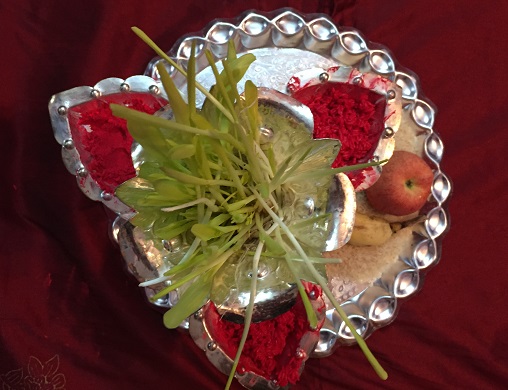Dasain Festival : Victory over evils

By Bhesh Jung Badal —
Dasain, the festival of inspiration to overcome enmity, disunity hatred, cruelty and all kinds of evil among family members, villages and society , is the longest Hindu festival. In Nepal, it is known as the national festival and most lavishly celebrated for fifteen days in the autumn season . These days are neither cold nor hot, neither rain nor drought but very delightful for all the living beings . The season is itself charming in which the long celebrated Dasain adds the heavenly pleasure to all.
Mainly the Hindus celebrate this festival but all the communities following different religions also informally celebrate with great pleasure. Dasain has been celebrated from time immemorial ,same as western world’s Christmas. It is the longest holiday during which families unite to exchange blessings and gifts, express goodwill and forget feuds and quarrels if any in case have among them.
It is the festival for worship of the mother goddess. During two weeks preceding the full moon of September or October, Dasain is celebrated throughout Nepal. This great festival takes place in the month of October and is celebrated for fifteen days. The most important day is called Bijaya Dashami . Goddess Durga is worshipped with elaborate dances and ritual animal sacrifices throughout the country.
Dasain is also known as Durga Puja in South ASia. It is believed that Mother Goddess saved the world from evil forces in the epic times. According to the Ramayan , the Hindu’s foremost legend, it is the righteous King Ram who gets victory over Ravan, the king of Demons who slays the thousand headed devil and frees the world from misery. Since that time Durga has been worshipped as the great protector.Patan Durbar Square is one of the main attraction during this festival.
Each day of Dasain, the devotees visit the temples to worship Goddess Durga . On the first day of Dasain , each household fills a holy water vessel (Kalash) said to represent Durga, and places it in a worship room . Worshippers ritually bathe at holy rivers banks where they collect sand and water for Durga offering. Barley or other grain seeds are ceremoniously sown in the sand in the worship room. This room is shielded from light and each day sprinkled with holy water to grow seedlings faster. On the tenth day parents or the elders of the family cut the tender white sprouts and place them on the head of youngsters as a blessing with this a blessing Tika, made of rice seeds mixed with curd and colours.
In Kathmandu on the Seventh day, thousands throng the streets near Ranipokhari where the Royal Kalash, filled with flowers and leaves arrives from its three–day journey carried afoot from Gorkha. Grand gathering of government officials awaits the arrivals.
On the 8th day black buffalos, representing the terrifying monster that Durga once slew are ritually slain, their hearts pierced, their heads and throats cut to please the Goddess, ‘Mahakali’. It is believed that animals thus sacrificed will be reincarnated to human and gain merit toward eventual relief from worldly suffering.
On the 8th day , Mahakali( her incarnation ) and Kalratri (black night ) is celebrated with the offerings of animals like goats, ducks, buffalos, sheep, as the day of victory over the monsters. So this is ‘Vijaya Dashami’. This is the day on which the Dasain celebrations reach its climax.
For the celebration of Dasain, every family in Nepal prepares varieties of food and sweets. Floors are scrubbed, walls painted, doors, windows and ceremonial places decorated in anticipation of Goddess Durga’s and distant relatives visits. People visit their hometowns to share blessings with their families.
For days preceding the start of Dasain the people of the villages and cities clog the streets of market shopping for clothes, gifts, and fancy food for the upcoming days of festivities. Heards of buffalos, bleating sheep are ushered to in the market from Terai and Tibet for sale and eventual slaughter in the name of Goddess Durga.
The following dawn sees massive sacrifice performed publicly in the square of Hanuman Dhoka. It is not a sight for the soft hearted. It is believed that the more one kills, the more one gains. The blood, from the slain animals is sprinkled at the sight of Mother Durga, and on vehicles, even aeroplanes to prevent accidents. Tools of trades–-shovels, axes, soldering irons, plows etc. are likewise initiated in hope of professional success. The next day ‘Vijaya Dashami’ on which Rama and Durga triumphed over Universal Evil. This is the day of exchanging blessings and offerings.
The last day of Dasain, known as Kaojagrat Purnima , falls on the full moon light. People, at home or at temple, hold all night visits with the belief that those who keep awake at night will be blessed by Mahalaxmi, the Goddess of prosperity. This ends the two weeks of Dasain Festival.
Government offices except communication, security and health sectors are closed for 10 days and the academic institutions are closed for 15 days.















